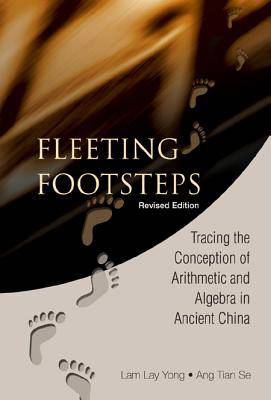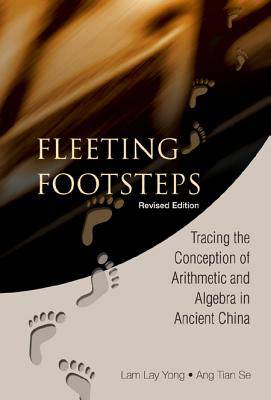
- Retrait en 2 heures
- Assortiment impressionnant
- Paiement sécurisé
- Toujours un magasin près de chez vous
- Retrait gratuit dans votre magasin Club
- 7.000.0000 titres dans notre catalogue
- Payer en toute sécurité
- Toujours un magasin près de chez vous
Fleeting Footsteps: Tracing the Conception of Arithmetic and Algebra in Ancient China (Revised Edition)
Tian Se Ang, Lay Yong Lam
Livre relié | Anglais
134,45 €
+ 268 points
Description
The Hindu-Arabic numeral system (1, 2, 3, ...) is one of mankind's greatest achievements and one of its most commonly used inventions. How did it originate? Those who have written about the numeral system have hypothesized that it originated in India; however, there is little evidence to support this claim.This book provides considerable evidence to show that the Hindu-Arabic numeral system, despite its commonly accepted name, has its origins in the Chinese rod numeral system. This system was widely used in China from antiquity till the 16th century. It was used by officials, astronomers, traders and others to perform addition, subtraction, multiplication, division and other arithmetic operations, and also used by mathematicians to develop arithmetic and algebra. Based on this system, numerous mathematical treatises were written.Sun Zi suanjing (The Mathematical Classic of Sun Zi), written around 400 AD, is the earliest existing work to have a description of the rod numerals and their operations. With this treatise as a central reference, the first part of the book discusses the development of arithmetic and the beginnings of algebra in ancient China and, on the basis of this knowledge, advances the thesis that the Hindu-Arabic numeral system has its origins in the rod numeral system. Part Two gives a complete translation of Sun Zi suanjing.In this revised edition, Lam Lay Yong has included an edited text of her plenary lecture entitled "Ancient Chinese Mathematics and Its Influence on World Mathematics", which was delivered at the International Congress of Mathematicians, Beijing 2002, after she received the prestigious Kenneth O. May Medal conferred by the International Commission on the History of Mathematics. This should serve as a useful and easy-to-comprehend introduction to the book.
Spécifications
Parties prenantes
- Auteur(s) :
- Editeur:
Contenu
- Nombre de pages :
- 268
- Langue:
- Anglais
Caractéristiques
- EAN:
- 9789812386960
- Date de parution :
- 08-04-04
- Format:
- Livre relié
- Format numérique:
- Genaaid
- Dimensions :
- 157 mm x 234 mm
- Poids :
- 535 g

Seulement chez Librairie Club
+ 268 points sur votre carte client de Librairie Club
Les avis
Nous publions uniquement les avis qui respectent les conditions requises. Consultez nos conditions pour les avis.






